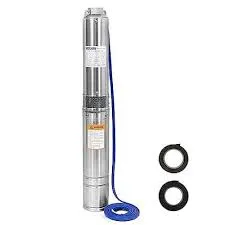Oct . 30, 2024 11:00 Back to list
water well submersible pump installation
Installation Guide for Water Well Submersible Pumps
Installing a submersible pump in a water well is a crucial task for ensuring an efficient water supply system. A submersible pump is designed to be submerged in water and is primarily used for pumping water from deep wells. This guide outlines the essential steps and considerations for installing a submersible pump effectively.
Preparation and Safety
Before beginning the installation, ensure you have the necessary tools and safety equipment. Tools such as a wrench, pliers, a level, and electrical tape will be required. Safety gear, including gloves and safety glasses, should be worn to protect against injuries.
Selecting the Right Pump
Choosing the right submersible pump involves understanding your water needs and the depth of your well. Pumps vary in horsepower, flow rate, and depth capability. Consult with a professional or refer to the manufacturer’s specifications to select the appropriate pump that matches your well’s requirements.
Gathering Materials
You will need various materials for the installation, including the submersible pump, electrical wiring, support brackets, and a check valve. Ensure all materials meet industry standards and are compatible with your pump model.
Installation Steps
water well submersible pump installation

2. Lowering the Pump Attach a rope or cable to the pump’s lifting bracket. Carefully lower the pump into the well casing. It’s crucial to lower it straight to prevent any damage.
3. Setting the Pump Depth Ensure the pump is set at the proper depth, typically at least 10 feet above the bottom of the well, allowing room for sediment. The depth will depend on your well's specifications and water table.
4. Connecting the Discharge Pipe Once the pump is lowered, connect the discharge pipe to the pump outlet. Ensure that all connections are secure to prevent leaks. Use thread sealant for threaded connections.
5. Installing the Check Valve Install a check valve above the pump to prevent backflow of water when the pump is off. Position it correctly to maintain the efficiency of the water system.
6. Electrical Connections Connect the power supply to the pump according to the manufacturer's instructions. It is advisable to use a junction box and ensure that all electrical connections are waterproof.
7. Testing the System After installation, turn the power back on and run the pump. Check for any leaks at the discharge pipe and ensure the pump operates smoothly without any strange noises.
Final Considerations
Regular maintenance of your submersible pump is essential for longevity. Periodically check the pump and electrical connections, as well as the well water quality. If you notice any issues, such as decreased water pressure or strange sounds, consult a professional for assistance.
In conclusion, installing a water well submersible pump is a manageable task with the right preparation and safety measures. Following these steps will help ensure a successful installation and a reliable water supply for your needs. Always consider consulting with or hiring a professional if you are uncertain about any part of the process.
-
Water Pumps: Solutions for Every Need
NewsJul.30,2025
-
Submersible Well Pumps: Reliable Water Solutions
NewsJul.30,2025
-
Stainless Steel Water Pumps: Quality and Durability
NewsJul.30,2025
-
Powerful Water Pumps: Your Solution for Efficient Water Management
NewsJul.30,2025
-
Oil vs Water Filled Submersible Pumps: Which is Better?
NewsJul.30,2025
-
Deep Well Pumps: Power and Reliability
NewsJul.30,2025
-
 Water Pumps: Solutions for Every NeedWhen it comes to handling dirty water, the dirty water pump is a must-have.Detail
Water Pumps: Solutions for Every NeedWhen it comes to handling dirty water, the dirty water pump is a must-have.Detail -
 Submersible Well Pumps: Reliable Water SolutionsWhen it comes to ensuring a reliable water supply, submersible well pumps are a top choice.Detail
Submersible Well Pumps: Reliable Water SolutionsWhen it comes to ensuring a reliable water supply, submersible well pumps are a top choice.Detail -
 Stainless Steel Water Pumps: Quality and DurabilityWhen it comes to choosing a water pump, the stainless steel water pump price is a crucial factor.Detail
Stainless Steel Water Pumps: Quality and DurabilityWhen it comes to choosing a water pump, the stainless steel water pump price is a crucial factor.Detail
